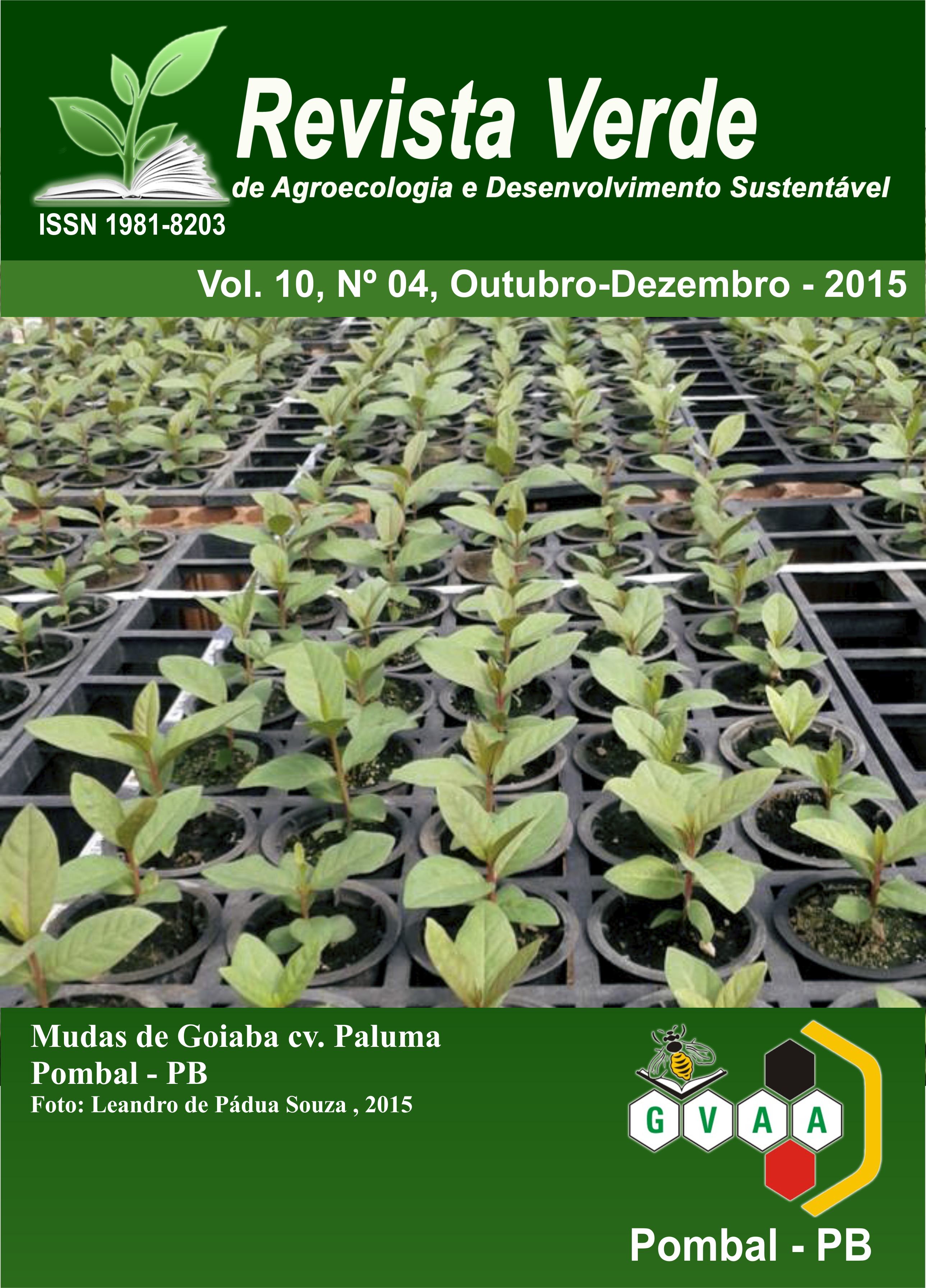Arborização em canteiros centrais na cidade de Patos, Paraíba
DOI:
https://doi.org/10.18378/rvads.v10i4.3761Palabras clave:
arborização viária, arboricultura urbana, inventário, semiáridoResumen
A arborização de canteiros nas cidades é uma prática que embeleza e permiti reduzir efeitos antropogênicos. O trabalho objetivou quantificar e avaliar a qualidade das árvores localizadas em canteiros centrais da cidade de Patos-PB e o risco que elas representam para a população. Foi realizado o levantamento florístico em 1.391,95 m de canteiros centrais, registrando informações dendrométricas e qualitativas quanto aos aspectos das condições existentes no meio. Foram registrados 166 indivíduos representados em 14 espécies, sendo 71,4% exóticas com destaque para Azadirachta indica e Prosopis juliflora. A maioria das árvores são adultas e medem mais de 10 cm de DAP com altura variando entre 1,6-7,21 m. Em relação à avaliação do risco, não registrou-se indivíduos em conflito com as redes elétricas e sim a presença de galhos ocos nos níveis médio e leve. Na maioria dos indivíduos o sistema radicular apresenta-se subterrâneo, mas, observou-se que 70,1% não apresentam neilóides em superfície, aumentando a suscetibilidade de risco de queda desses indivíduos. Conclui-se que as espécies de maior ocorrência nos canteiros centrais da cidade de Patos são exóticas e que a maioria dos indivíduos sofreram intervenção silvicultural de forma inadequada.
Arborization in the medians of the city of Patos, Paraíba Estate
Abstract: The arborization in the central urban area of cities is a practice that beautifies urban areas and reduces anthropogenic effects in these areas. The aim of the present study was to measure and assess the quality of trees located in the medians of the city of Patos, PB, through identifying, quantifying and characterizing the vegetation in three different medians and evaluating the risks these trees posed to the population. The analyzed vegetation included 166 individual trees belonging to 14 different species, 71.4% of which were exotic species. The most represented species were Azadirachta indica and Prosopis juliflora. Most of the tress were fully grown and measured over 10 cm DBH with heights ranging from 1.6 to 7.21 m. In relation to risk assessment, there were no specimens that interfered with the electrical networks, but the presence of hollow branches was found in low to medium levels. In most individuals the root systems were located underground, but it was observed that 70.1% of the evaluated trees had surface roots (neilóides), increasing their susceptibility to falling. This study concluded that most of the trees in the medians of Patos city are exotic and most of these trees have suffered inappropriate silvicultural intervention.















